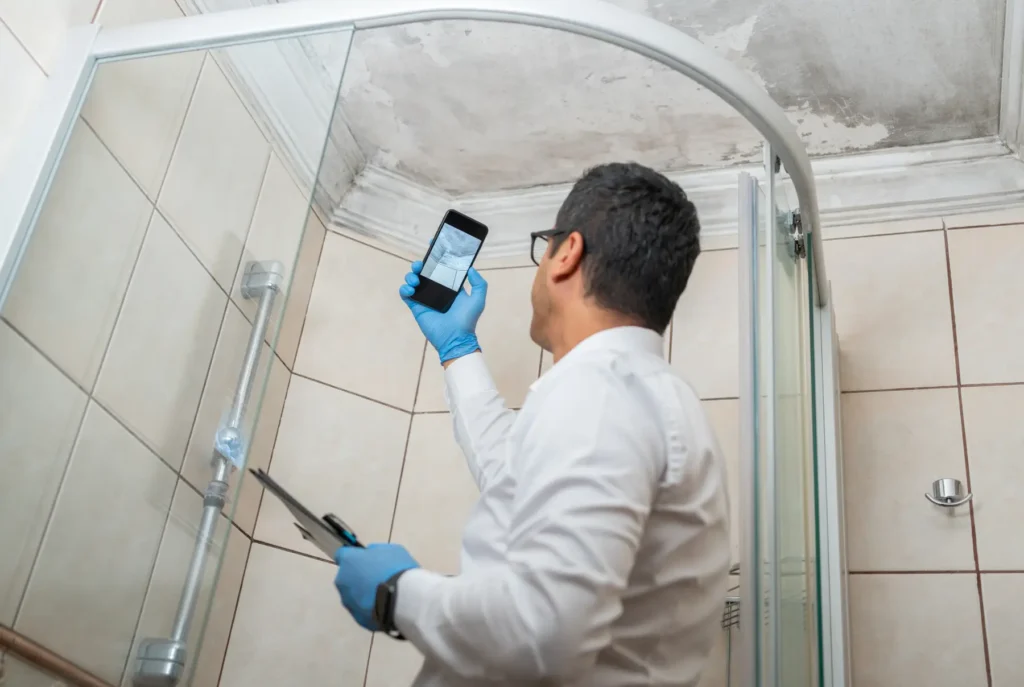
Mould Inspection to Detect and Prevent Home Damage
Mould is a fungus that thrives in damp environments, growing on surfaces such as walls, ceilings, carpets, and wooden structures. It spreads through airborne spores, which settle in moist areas, leading to potential health risks and structural damage. These microscopic spores can remain dormant for long periods until they encounter a suitable environment for growth. Mould colonies can develop rapidly, producing allergens and irritants that affect indoor air quality and overall well-being.
Why Mould Inspection Is Essential
Many property owners only notice mould when visible patches appear. Mould often grows behind walls, under floors, and within ventilation systems. A professional mould inspection helps detect hidden mould, assess the extent of contamination, and recommend remediation strategies before issues escalate. Early detection prevents significant structural damage and reduces the risk of costly repairs.
The Impact on Homes and Health
Mould exposure can trigger respiratory problems, allergic reactions, and skin irritations. Long-term exposure may lead to severe health complications, particularly for children, the elderly, and individuals with respiratory conditions. Mould can also compromise the structural integrity of a home by weakening wood, drywall, and insulation materials, leading to costly renovations. Ignoring the problem can result in chronic indoor air quality issues, impacting the overall comfort of the living environment.
Common Causes of Mould Growth
Water Leaks and High Humidity
Mould growth is often linked to excessive moisture, making water management crucial in mould prevention. The following are common causes:
- Leaking pipes and roofs: Persistent leaks provide a continuous source of moisture for mould growth.
- Condensation buildup on walls and windows: Poor insulation and temperature fluctuations create condensation, fostering mould growth.
- Poor ventilation in bathrooms and kitchens: Inadequate airflow leads to high humidity levels, creating ideal conditions for mould.
- Flooding and inadequate drying procedures: After a flood, any residual moisture left unaddressed can promote rapid mould development.
Health Risks of Mould Exposure
Mould exposure affects individuals differently, depending on their sensitivity and pre-existing conditions.
- Short-Term Effects: Sneezing, nasal congestion, skin rashes, itchy eyes, and throat irritation.
- Long-Term Effects: Chronic respiratory conditions, worsening of asthma symptoms, lung infections, and immune system suppression.
- High-Risk Groups: Children, elderly individuals, pregnant women, and immunocompromised people are more vulnerable to mould-related health issues.
Recognizing Signs of Mould Presence
Visible Indicators
Mould appears in various colours and textures, including:
- Dark green, black, or white patches on walls and ceilings
- Peeling wallpaper or bubbling paint due to trapped moisture
- Warped or rotting wooden surfaces, often found in humid rooms
Hidden Mould Detection
Mould often grows out of sight, making detection difficult. Look for:
- Persistent musty odours, especially in confined spaces
- Unexplained allergy symptoms indoors, such as sneezing or skin irritation
- Soft or crumbling drywall, which may indicate moisture intrusion
- Water stains on ceilings and walls, suggesting leaks and potential mould growth
High-Risk Areas in Homes
Certain areas in the home are more susceptible to mould development:
- Bathrooms and kitchens: High humidity from showers, sinks, and cooking activities.
- Basements and crawl spaces: Dark and damp conditions encourage mould colonization.
- Air conditioning units and window sills: Mould spores settle and multiply in areas with condensation.
- Under carpets and behind wallpaper: Trapped moisture creates an ideal breeding ground for mould.
How Professional Mould Inspectors Assess Your Property
Certified inspectors conduct thorough assessments using specialized tools to detect both visible and hidden mould. They evaluate moisture levels, identify potential causes, and recommend effective solutions. A professional inspection provides peace of mind and ensures comprehensive remediation.
Techniques Used in Mould Inspections
To accurately assess the presence and severity of mould, inspectors use various techniques:
- Moisture Meters: Identify damp spots in walls and floors, indicating possible mould growth.
- Infrared Cameras: Detect hidden moisture and temperature variations that signal mould presence.
- Air Quality Testing: Measure airborne mould spore concentration to determine exposure levels.
- Surface Sampling: Identify specific mould species and contamination levels through lab analysis.
Understanding Mould Inspection Reports
A professional report details:
- Areas affected by mould
- Mould species identified
- Moisture sources contributing to growth
- Recommended remediation and prevention steps
DIY vs. Professional Mould Testing
DIY Mould Testing Kits: Are They Reliable?
- Pros: Affordable, quick results for minor cases
- Cons: Limited accuracy, inability to detect hidden mould, lack of professional analysis
Advantages of Hiring a Mould Inspector
- Comprehensive property evaluation: Ensures all areas are thoroughly inspected.
- Identification of mould type and severity: Helps determine health risks and necessary actions.
- Professional recommendations for remediation and prevention: Ensures safe and long-lasting solutions.
Preventing Mould Growth in Your Home
Moisture Control Strategies
- Use dehumidifiers in high-humidity areas to maintain optimal moisture levels.
- Improve ventilation, particularly in bathrooms and kitchens, to prevent excess humidity.
- Fix leaks and water damage immediately to eliminate moisture sources.
- Install waterproof barriers in basements and crawl spaces to reduce dampness.
Routine Maintenance Tips
- Inspect pipes, roofs, and walls regularly for leaks or moisture intrusion.
- Keep gutters clean to prevent water accumulation near the property’s foundation.
- Ensure air conditioning units are serviced annually to prevent moisture buildup.
Enhancing Indoor Air Circulation
- Use exhaust fans in high-moisture areas to reduce humidity levels.
- Open windows and doors regularly to promote airflow.
- Invest in air purifiers with HEPA filters to trap airborne mould spores and improve indoor air quality.
Schedule a Mould Inspection
Protect your home and health by booking a professional mould inspection. Certified Australian mould inspectors provide expert assessments to ensure a safe, mould-free environment. Proactive prevention and timely remediation can save you from costly repairs and potential health risks.
Make a move for mould inspection – get a free quote from Owner Inspections.
